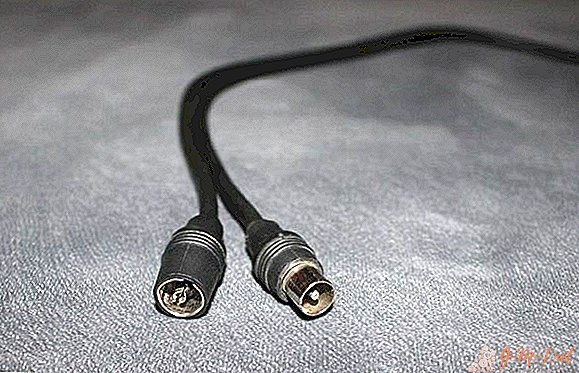 Models of modern TVs are equipped with a large number of connectors that facilitate the use of additional signal sources. This is necessary to increase the compatibility of equipment from different manufacturers, released at different times. Each of the connectors has its own purpose. Therefore, it is worth considering them separately.
Models of modern TVs are equipped with a large number of connectors that facilitate the use of additional signal sources. This is necessary to increase the compatibility of equipment from different manufacturers, released at different times. Each of the connectors has its own purpose. Therefore, it is worth considering them separately.
What is a coaxial connector on a TV
Some cable TV operators and Internet service providers still use networks, some of which are based on coaxial connectors or devices. This technology is a thing of the past, but in some cases it is still in demand.
The main purpose of the use of coax is to provide a connection between the cable, or the latter with equipment of various types. The connection itself has the main components - a pair of two types:
- "Socket plug".
- The "pin-nest".
The cable of a particular group is usually associated with the connectors of the whole set. The basis of the division into several types is the connection used, functions.
- Depending on the purpose, the connectors are instrument-cable, cable and instrument.
- The type of connection contributes to the separation of the cut and threaded, bayonet.
RG6 / RG11 - outputs for distribution or subscriber cables, the relevance of which remains, and even increases every year.
Attention! Increasingly, coaxial trunk cables are being replaced with optical counterparts. The high price of copper structures also leads to a decrease in their use in various fields.
Central steel core is the main component for coaxial cables. In addition, the use of clad copper, two types of braids is characteristic - wire on steel, aluminum. Thanks to such materials, production becomes cheaper. But simple soldering for products is not possible, tinning does not completely occur. The provision of connections is due to mechanical contact, this is an option to obtain the best result during further work.
Cable outputs are divided into several groups and depending on the installation method:
- Screw-on.
- Crimp.
- Compression.
About wire connectors
In this case, the basis of the design is the housing, together with a rounded integrated thread. The product complements the pressed-in nut to the F-standard.
These connectors have certain disadvantages:
- High fragility material.
- The pressure housing ring has insufficient density with respect to the nut. Because of this, the connectors are damaged during installation.
- The thread inside is short. Maximum tight cable fixation is not possible.
- When the connectors are wound onto cables, the conductors break off, partially cut. The protective sheath together with the braid are also twisted.
Crimp connectors
Here we are talking about using two cylinders. There is an external one - it seems to be continuing the building structure. The inner one is selected depending on the diameter of the cable dielectric with foil. When the connector is seated on the cables, the circular symmetry of the latter is not broken. The case on the outside involves crimping into a prism with six faces, using a crimping tool.
Reference! The main disadvantage is associated with the material used in the production. If the design is not high-quality - the case breaks too quickly. Because of this, the characteristics of the compound also deteriorate.

Compression Varieties
Relatively expensive products, which is associated with a complex design. But the characteristics of such outputs compensate for any expenses at the initial stage of the acquisition.
They have the following advantages:
- Coating with protection against corrosion.
- Operation up to 3 GHz.
- Extra protection against moisture.
- Shielding is better compared to conventional cables.
- The temperature range pleases with latitude, from -40 to +70.
- The tensile strength is higher when compared with cables.

About special adapters
Switching with already looped cables is a characteristic feature of modern offices. At different levels are the cable supply and telecommunication equipment. In this regard, there are problems with a place for bending structures and compliance with certain standards. Adapters for RF connectors are special adapters, the use of which allows solving the problem.
Each outlet on the modern market is created to solve a problem. On individual subscriber telephone lines normally inexpensive varieties can work, with simple threaded connections. But this does not mean that the same equipment will cope with especially important sections of cable networks. You will need to purchase professional types of connectors, crimp or compression. Each section of the highway has its own equipment requirements.


Leave Your Comment